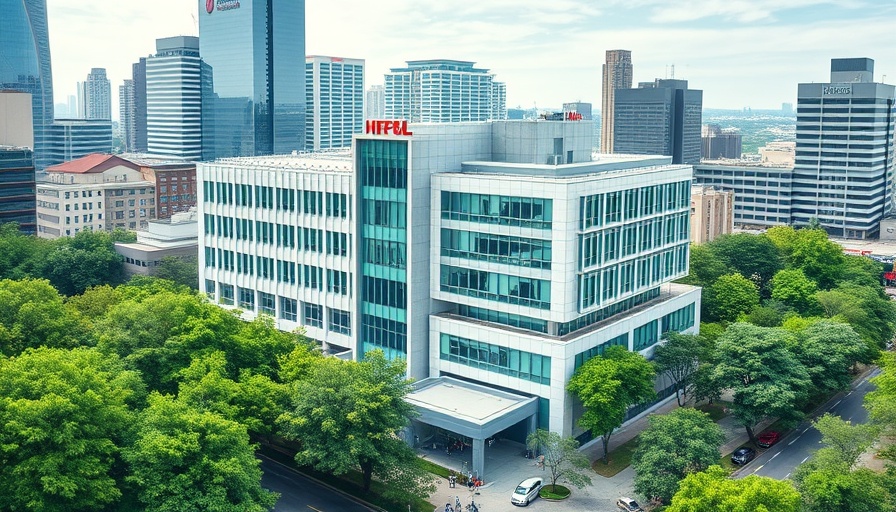
Vietnam's Remarkable Leap in Pediatric Neurosurgery
In a groundbreaking development for Southeast Asian medicine, Vinmec Central Park International Hospital in Ho Chi Minh City has achieved a historic milestone: the first robotic-guided brain surgery for a child suffering from drug-resistant epilepsy. This significant medical feat was performed on June 17, 2025, on a 9-year-old boy named B.Q.K. who had endured relentless seizures since 2021. Despite numerous treatment attempts both in Vietnam and abroad, his condition remained unresolved, leading his family on a five-year quest for a definitive solution.
Understanding the Challenge of Epilepsy
Drug-resistant epilepsy poses a substantial challenge for both patients and medical professionals. Statistics reveal that around 30% of epilepsy patients do not respond to traditional treatments, and for children, pinpointing the origin of their seizures can be particularly complex. Conventional techniques like EEG, PET scans, or MRIs often yield inconclusive results. This highlights the pressing need for innovative approaches in neurosurgery.
The Advent of Robotic Surgery in Vietnam
Thanks to advancements in technology, robotics has begun to reshape the landscape of medical procedures, particularly in neurosurgery. The AutoGuide™ robotic system utilized for B.Q.K.'s surgery allowed for an unprecedented level of precision during electrode implantation. Dr. Truong Van Tri, who led the surgical operation, stated, "For the first time, we achieved a near-perfect outcome in pediatric epilepsy surgery thanks to AutoGuide™. This is a critical milestone, especially for young patients who are highly vulnerable to major brain surgery." Such success demonstrates the potential robotics holds in improving surgical outcomes.
A Technique Like No Other
The surgery involved the innovative technique of stereo-electroencephalography (SEEG). This method provides real-time data with sub-millimeter accuracy, allowing surgeons to map the brain activity that leads to seizures and subsequently perform a minimally invasive resection of the affected areas. The precision of this new technique is invaluable, particularly when operating in regions of the brain dense with blood vessels and neural pathways, such as the orbitofrontal cortex and inferior frontal gyrus.
Recovery and Outcome: A New Lease on Life
Post-surgery, B.Q.K. exhibited no neurological deficits and quickly returned to his daily activities. The results were astounding—his seizure frequency plummeted by over 95%. This success not only sparked hope for the young patient but also represents a leap forward for Vietnam's healthcare system, pushing its standards closer to international benchmarks.
The Future of Robotic Surgery in Asia
As the global medical robotics market continues to grow, reaching an estimated value of $127 billion by 2033, the adoption of advanced robotic systems in surgery becomes paramount. The recent success at Vinmec Central Park will likely encourage the establishment of further centers of excellence across Vietnam and the region. These developments indicate a shift towards embracing advanced medical technologies, which can lead to improved surgical care and patient outcomes.
A Beacon of Hope for Epilepsy Patients
Beyond the technical prowess demonstrated by the surgical team, the human impact of this operation cannot be overstated. The ability to significantly reduce or eliminate seizures in young patients is life-changing for both them and their families. It fosters a community-based approach to improving health outcomes for children facing similar challenges.
Embracing Medical Innovations: What This Means for You
This advancement in pediatric neurosurgery serves as a reminder of the transformative power of medical innovation. If you or someone you know deals with epilepsy or similar health issues, stay informed about the latest developments in treatment options. Embracing these advancements can lead to improved health and quality of life.
Engaging in Conversations Surrounding Health Innovations
With such promising advancements, it’s crucial to discuss the implications of technological innovations in healthcare. How can we prepare for the rapid growth of medical technologies like robotic surgery? What role can patient advocacy play in driving progress? Engaging in these conversations not only empowers patients but also assures that they remain at the center of medical discoveries.
 Add Row
Add Row  Add
Add 



Write A Comment